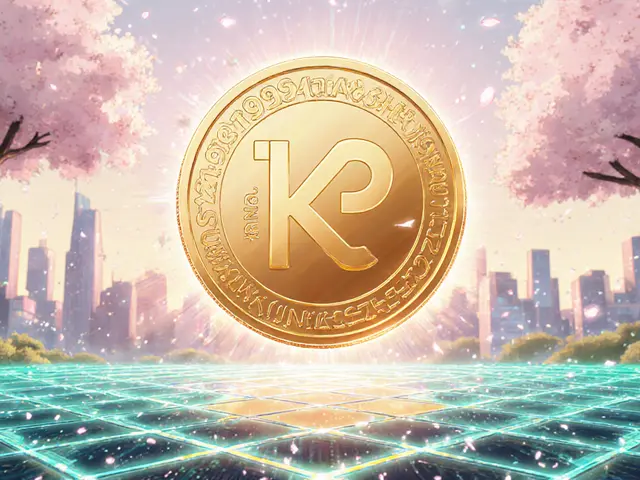Firebird Finance Feature Comparison
This tool compares Firebird Finance with leading Polygon DEXs to help you understand their relative strengths and weaknesses.
TVL Comparison
Firebird Finance has $4.8M TVL vs $5B for SushiSwap
Stablecoin Trading
OneSwap offers ultra-low slippage
0.1% SlippageUnique Feature
Farms-as-a-Service for projects
FaaSFeature Comparison Table
| Feature | Firebird Finance | SushiSwap (Polygon) | QuickSwap |
|---|---|---|---|
| TVL (USD) | $4.8M | $5.0B | $1.2B |
| Native Token | HOPE | SUSHI | QUICK |
| Stablecoin AMM | OneSwap (low-slippage) | Standard AMM | Standard AMM |
| Auto-Compounding Vaults | Yes | Yes (via BentoBox) | No |
| Farms-as-a-Service | Yes (unique) | No | No |
| Average Swap Fee | 0.30% | 0.25% | 0.30% |
| Gas Cost (Polygon) | ~$0.008 | ~$0.008 | ~$0.008 |
| Community Size | ~5k Twitter followers | ~200k Twitter followers | ~150k Twitter followers |
Key Strengths
- Low gas fees on Polygon
- OneSwap for ultra-low stablecoin slippage
- Auto-compounding vaults
- Farms-as-a-Service for developers
Potential Risks
- Lower TVL = higher slippage on small pairs
- Limited community scrutiny due to size
- HOPE token liquidity concerns
- Smart contract risks despite audits
Recommendation
Firebird Finance is best suited for:
- Yield Optimizers: Wanting integrated farming and compounding
- Stablecoin Traders: Needing ultra-low slippage
- Project Teams: Looking to launch farms quickly
- Cost-Conscious Traders: Seeking cheap Polygon transactions
Not ideal for:
- Casual traders needing deep liquidity on popular pairs
- Users wanting exposure to top-tier DeFi protocols
TL;DR
- Firebird Finance is a Polygon‑based DEX that bundles swapping, yield aggregation, and auto‑compounding vaults in one UI.
- It runs an AMM called OneSwap for low‑slippage stablecoin swaps and offers a unique "farms‑as‑a‑service" layer.
- TVL sits around $4.8million, a fraction of giants like SushiSwap, so liquidity can be thin on smaller pairs.
- Security is decent - contracts are audited, but the platform’s modest size means less community scrutiny.
- Best for traders comfortable with DeFi who want integrated yield‑farming tools without hopping between multiple apps.
What is Firebird Finance?
Firebird Finance is a decentralized finance (DeFi) platform built on the Polygon and Binance Smart Chain networks. It aims to combine a regular exchange, a yield‑aggregator, and a vault system into a single, easy‑to‑navigate ecosystem. Launched in 2022, the project markets itself as a three‑in‑one solution for traders, liquidity providers, and yield farmers looking to maximize returns while keeping gas fees low.
Core Features
The platform revolves around five main building blocks.
- Swap Engine (AMM): The default swap page functions as an automated market maker. Users can trade any Polygon token while the protocol collects a small fee that is later funneled into yield farms.
- OneSwap: A specialized AMM for stablecoins such as USDC, USDT, and DAI. By limiting the asset class, OneSwap delivers ultra‑low slippage, often under 0.1%, making it ideal for large stablecoin moves.
- Vaults & Auto‑Compounding: Users deposit LP tokens into vaults that automatically reinvest earned rewards. Compounding happens every block, which can boost APRs by 10‑30% compared to manual reinvestment.
- HOPE Staking: The native HOPE token acts as both a governance token and a staking asset. Locked staking (30‑day, 90‑day) yields extra reward boosts. Holding HOPE also grants early access to new farms.
- Farms‑as‑a‑Service (FaaS): Any DeFi project can spin up its own yield farm on Firebird with a few clicks. This democratizes farming infrastructure and adds a revenue stream for the platform.
Performance Numbers
According to the latest on‑chain data, Firebird Finance locks roughly $4.8million in total value. That places it in the lower tier of Polygon DEXs, where the top‑tier player SushiSwap holds over $5billion in TVL across multiple chains, including Polygon. The smaller TVL means occasional price impact on niche pairs, but it also translates to low transaction fees-Polygon’s average gas cost is under $0.01 per swap.
Transaction confirmation on Polygon typically lands in 2‑3 seconds, far faster than Ethereum’s 30‑second‑plus window. The combination of speed and cheap fees gives Firebird a strong edge for high‑frequency traders.

User Experience & Onboarding
Firebird’s UI follows a clean, three‑tab layout: Swap, Vaults, and Staking. After connecting a wallet (MetaMask, Trust Wallet, or any Polygon‑compatible wallet), users are greeted with a dashboard that shows current APRs, TVL per farm, and a quick‑swap box.
The learning curve is moderate. Newcomers must grasp basic DeFi concepts-how AMMs price assets, what impermanent loss is, and how auto‑compounding works. Documentation exists on the site, but it leans toward a technical audience; there are no in‑app tutorials or guided tours, so community forums and Discord become essential for support.
Security & Risks
Firebird Finance’s smart contracts have undergone a third‑party audit by a reputable firm (details posted on the official GitHub). No major exploits have been reported to date. Nevertheless, the platform’s relatively low liquidity introduces a few risks:
- Slippage on tiny pools: Trading a low‑volume token can cause price swings of 5‑10% in a single swap.
- Smart‑contract risk: Even audited code can contain hidden bugs; users are encouraged to test with small amounts first.
- Token liquidity: The HOPE token has limited market depth, meaning large sells could move the price sharply.
Overall, Firebird sits in a safe zone compared to many unaudited projects, but it doesn’t have the extensive community oversight that larger DEXs enjoy.
How It Stacks Up Against Other Polygon DEXs
| Feature | Firebird Finance | SushiSwap (Polygon) | QuickSwap |
|---|---|---|---|
| TVL (USD) | $4.8M | $5.0B | $1.2B |
| Native Token | HOPE | SUSHI | QUICK |
| Stablecoin AMM | OneSwap (low‑slippage) | Standard AMM | Standard AMM |
| Auto‑Compounding Vaults | Yes | Yes (via BentoBox) | No |
| Farms‑as‑a‑Service | Yes (unique) | No | No |
| Average Swap Fee | 0.30% | 0.25% | 0.30% |
| Gas Cost (Polygon) | ~$0.008 | ~$0.008 | ~$0.008 |
| Community Size | ~5k Twitter followers | ~200k Twitter followers | ~150k Twitter followers |
Firebird shines in niche features-stablecoin‑focused OneSwap and the farm‑as‑a‑service model-while it lags behind in total liquidity and brand recognition.
Who Should Use Firebird Finance?
If you fit one of the following profiles, Firebird could be a good match:
- Yield Optimizers: Users who want a single dashboard to farm, auto‑compound, and stake HOPE.
- Stablecoin Traders: OneSwap offers the tightest spreads among Polygon stablecoin AMMs.
- Project Teams: The FaaS feature lets you launch a custom farm without writing contracts.
- Cost‑Conscious Traders: Polygon’s low fees keep trading expenses minimal.
Conversely, casual traders seeking deep liquidity on popular pairs (e.g., ETH/USDC) might prefer larger DEXs where slippage is negligible.
Final Thoughts & Next Steps
Firebird Finance delivers a compact, feature‑rich DeFi hub on Polygon. Its TVL is modest, so expect higher price impact on obscure tokens, but the platform’s low fees and innovative tooling make it attractive for serious yield farmers.
To get started, follow these steps:
- Set up a Polygon‑enabled wallet (MetaMask, Trust Wallet, etc.).
- Bridge assets from Ethereum or another chain using the Polygon Bridge.
- Visit the Firebird swap page, connect your wallet, and perform a small test trade.
- Explore the vaults section; deposit the LP token you received from your swap to start auto‑compounding.
- If you hold HOPE, consider a 30‑day lock‑up for boosted rewards.
Keep an eye on the platform’s Discord for upcoming farm launches and any governance votes that could affect HOPE’s tokenomics.

Frequently Asked Questions
Is Firebird Finance safe to use?
The core contracts have been audited and no major exploits have been reported. However, like any DeFi protocol, smart‑contract bugs and low liquidity pose risks, so start with small amounts.
How does OneSwap differ from the regular swap?
OneSwap is dedicated to stablecoins only, allowing the AMM to keep the price curve tight. This results in slippage often below 0.1%, whereas the generic swap can see higher slippage on volatile pairs.
What is the benefit of staking HOPE?
Staking HOPE locks your tokens for a chosen period (30‑ or 90‑day) and grants a reward multiplier on farm yields. It also gives voting power in protocol governance.
Can a new project launch a farm without coding?
Yes. Firebird’s farms‑as‑a‑service UI lets a token team configure reward rates, duration, and LP pair in minutes, handling all contract deployment behind the scenes.
How does Firebird’s TVL compare to other Polygon DEXs?
With roughly $4.8million locked, Firebird sits well below top‑tier DEXs like SushiSwap ($5billion) and QuickSwap ($1.2billion). The lower TVL means fewer traders and tighter spreads on niche assets.







Write a comment
Your email address will be restricted to us